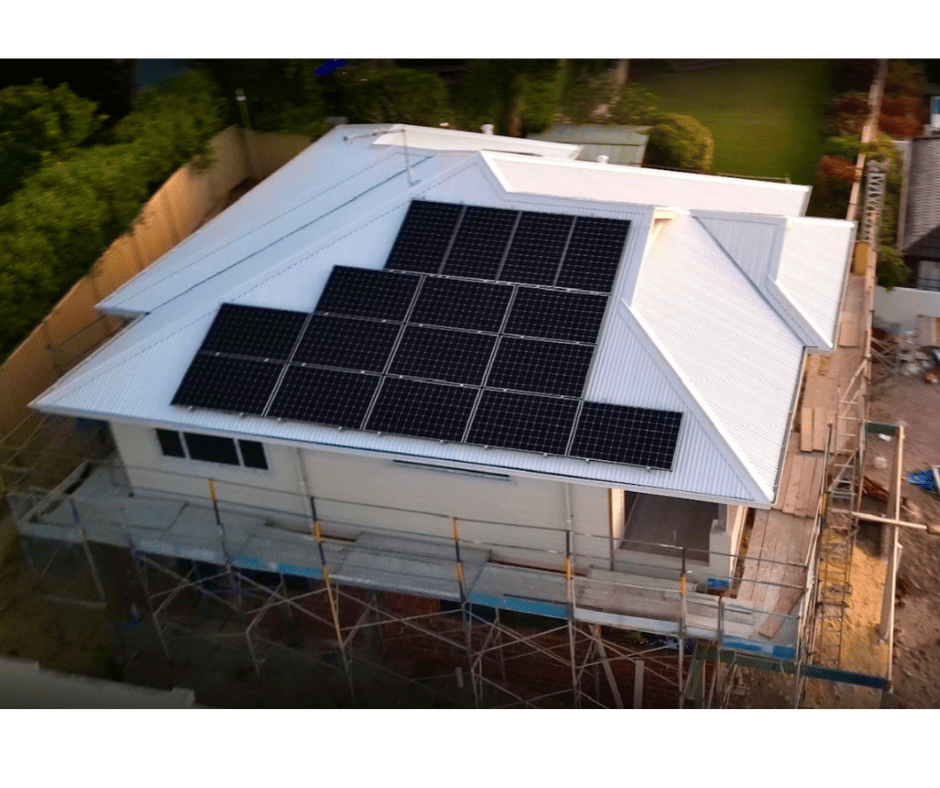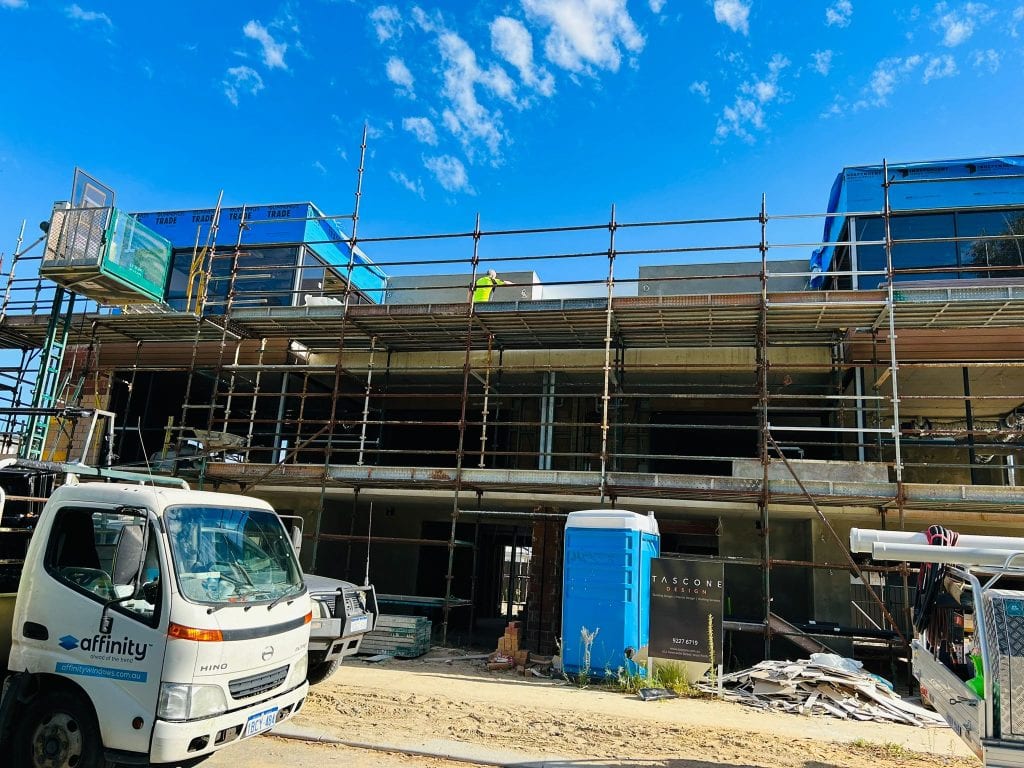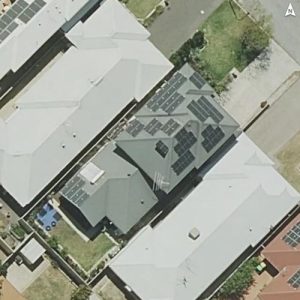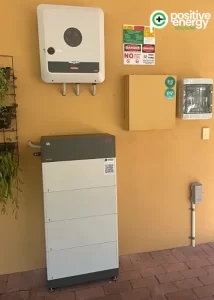Building A House With Solar Panels
Building a house with solar panels is gaining popularity. This is due to the potential to reduce energy costs and reliance on non-renewable sources. Solar power can provide an efficient and renewable source of energy for the home if planned and installed correctly.
Installing solar in a new home has many benefits. This article will discuss the best practices for installation, as well as government rebates and tips. Additionally, the importance of working with professionals.
Additionally, this article will also explore the considerations needed when planning the build. Such as block location and direction, roof size and shape, solar batteries, EV chargers and single or three phase electricity supply.
Key Takeaways
- Solar power planning is required when building a new home.
- The efficiency of solar panel installations need to consider the shape of the block, shading, roof orientation and design.
- Government rebates and incentives for solar power change , so it’s important to stay up-to-date on the latest information.
- Pre-installing wiring and laying solar panels can save time and money.
- Good communication between the builder, architect, and solar installation company is key.
- It is important to consider the following when installing solar panels. The size and location of the solar panels, the placement of the inverter and battery, and electric car chargers.
Things to consider when building
When installing solar panels on a new home, it is important to consider several factors. These include roof orientation and design, existing shade from nearby objects, and the shape of the block of land.
Government rebates and incentives, pre wiring and laying solar panels, inverter placement, switchboard size and capacity, cabling for electric car chargers, and data connections all need to be considered.
The roof should face an angle that allows for optimal efficiency with minimal shading. Ideally facing North.
Pre wire cables before walls are gyprocked is cost-effective and ensures no visible wiring or external conduit.
Inverter location should minimise voltage rise and allow for batteries and EV chargers.
A bigger switchboard with more capacity will allow for easier upgrades in the future if needed.
Finally, providing a reliable data connection ensures accurate monitoring of production and consumption.
Block location and direction
The orientation of the block and its direction can have a significant effect on the efficiency of solar panels.
When constructing a new home, the shape and location of the block should considered. This helps to ensure the optimal preparation for solar panel installation.
Coastal blocks will need solar panels with higher corrosion ratings. Additionally, nearby objects such as trees or buildings need to be taken into account.
North-facing roofs are ideal for optimal energy production. However, east and west-facing roofs can work well too.
Communication with the architect, builder, and solar experts is essential before construction begins. This will ensure successful planning of the solar panel installation when building a new home.
Roof size and shape
Designing the roof size and shape of a new home is essential for optimal solar panel placement. The roof should fit the desired size solar system. As well as ensuring an unobstructed installation to maximise its output. To achieve this, it is important that architects and builders consider several factors when designing the roof:
- Roof orientation: North facing roofs are ideal for solar systems due to their ability to capture more sunlight. East and West-facing roofs can be used for solar power systems. However, they may need extra panels to capture enough energy.
- Roof space: The amount of roof space available will determine the amount of panels. Generally speaking, each square metre of roof provides 250-300 watts of electrical energy.
- Roof design: The angle and design of the roof should allow for support of the panels and not have too much shading reducing performance.
- Safety considerations: It is important to use scaffolding and harnesses, where appropriate. Therefore avoiding accidents or damage.
- Additionally, pre-wiring cables before walls are gyprocked helps ensure a neat and tidy install.

Batteries and EV chargers
When designing a new home build, it is important to consider the size and location of solar batteries and EV chargers. Whether installed now or in the future.
Positioning of these items can help optimise the efficiency and performance of the system. The inverter installed in in a cool, shaded spot such as a garage, while also minimising the distance to the switchboard.
Batteries installed close to both the switchboard and inverter, making them easy to access.
Pre-wiring during construction also helps reduce costs and visible cables throughout the home.
Single or Three Phase
When installing solar power systems in a new home, consider whether to use a single-phase or three-phase electricity supply.
Single-phase electricity supply is most common for residential homes. However larger properties generally use three phase.
With single phase power, the largest allowed solar on a home is 6.6kW, although extra solar can be installed when a battery is present. Therefore to install a larger system three phase will be required.
Three phase also offers higher efficiency and faster electric car charging which is desirable for most new home owners.
Consider current and future needs when choosing between single or three phase. This will help ensure the best solution.
Pre wire and Panel plonk
Pre-wiring of cables and panel plonk should be considered when constructing a new home. This ensures the cable runs are accessible and to take advantage of scaffolding that is in place.
Pre-wiring is an important step, completed before walls being gyprocked, allowing for no visible wiring or conduit. It is also worth installing the cabling for solar batteries and electric vehicle chargers.
Panel Plonks involves installing the solar panels on the roof before scaffolding comes down to save time and money.

Duration of build
The duration of construction is an important factor to consider when planning for a solar system. The government rebates change each year, so it is important in pricing the job correctly.
Additionally, timing the solar installation before gyprocking can also help save time and money.
It is recommended that homeowners get firm quotes during the design process, or at least 3-4 months before handover.
Furthermore, installing 3 phase power during construction allows for installs of larger systems. This will also enable faster electric car charging for homeowners.
Conclusion
The installation of solar panels in a new home requires careful consideration and planning. Solar power provides many benefits, including cost savings and reduced reliance on fossil fuels.
Proper planning for solar panel installation is essential to ensure successful integration into a new home.









